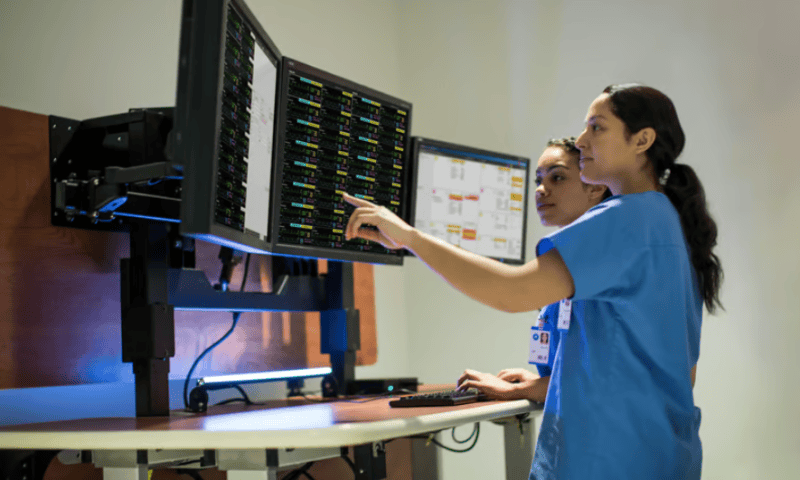ANAHEIM, California—More than two years after purchasing the medical data aggregator Capsule Technologies, Philips is launching a newly integrated information platform capable of connecting nearly all of the devices used across a hospital, regardless of their manufacturers.
In addition to collating streams of siloed patient data, the vendor-neutral system will also provide a foundation for digital surveillance programs to help clinicians keep tabs on information from various pieces of hardware and alert care teams to the early signs of deterioration or life-threatening issues.
On a technical level, the company described the occasion as the beginning of interoperability between its Philips Capsule Medical Device Information Platform, or MDIP, and its Philips Patient Information Center iX, or PIC iX. Where MDIP collects data from various equipment—from the company’s vital sign readers as well as non-Philips-made infusion pumps, for example—PIC iX provides clinicians with a centralized patient monitoring system.
“Effectively what you can do is take all the disparate medical devices that are in the hospital, you take that information, and then you’re able to create a visualization and enable the usability of that data,” Julia Strandberg, head of Philips’ connected care division, said in an interview at AdvaMed’s MedTech Conference.
“So what Capsule has done is take all the different, disparate datasets that come off of vital sign monitors, dialysis machines, ventilators, etc., and it sends that information directly into the EMR,” Strandberg said. “That’s great, but what we’ve done today is we’ve said: We need all that information that comes from very different pieces of equipment, such as in an ICU, for example, and we need that to flow not just into a data repository, but into something that becomes clinically usable.”
Philips first swallowed up Capsule in 2021, through a $635 million deal that gave it control of its software-as-a-service offerings that were used by more than 2,800 healthcare organizations at the time. Previously, MDIP and PIC iX had largely been operating separately.
“I think of Capsule as these data train tracks,” Strandberg said. “It takes a device—which could be from Philips, it could be from GE, it could be from Medtronic, it could be from a variety of medical device manufacturers—and it takes their output and routes it to the EMR, and now with our technology, it also sends it to PIC iX, which acts as a central visualization station.”
Within PIC iX, the platform can also apply different software modules to Capsule’s data flow, including clinical decision support tools, as well as systems that track the performance of the monitors themselves for any needed maintenance. It can also relay patient information to mobile devices carried by nursing staff.
“You can take it one step further, and all that information can come together to create insights. Those insights can then create early warnings. You can also imagine that in the future we can create predictive analytics on top of this,” Strandberg said.
“By combining the two, I think you make magic,” she continued. “We would love for Phillips devices to be in every single hospital and on every single floor, but we know that’s actually not the case.”

